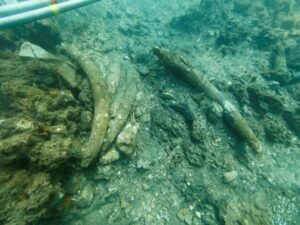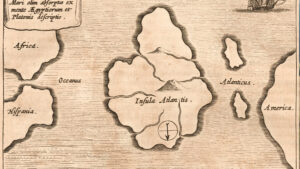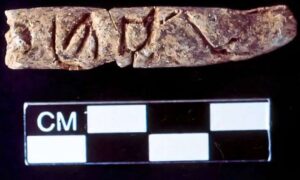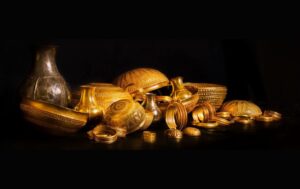A lot of archeology is a dry, boring slog, at least if you do it right. Looking at you, Heinrich Schliemann! But every now and then, it really can feel like a movie. This is one of those times — an honest-to-goodness treasure trove of gold, silver, jewelry, and vases uncovered on the Greek island of Evia. According to the Independent, a team of 50 researchers discovered the cache while excavating a small temple that dates back to the 7th century BC.
A translated Facebook post from Greece’s Ministry of Culture, posted earlier this month, sheds light on the wondrous finds.

Some of the ceramics from the site. Photo: EASE
“The excavation of the ancient temple brought to light rich relics: Corinthian alabasters, Attic vessels, locally produced ritual goods, as well as jewelry made of precious materials (gold, silver, coral, amber), amulets from the East, copper and iron armament fittings,” the post read.
A work in progress
The latest finds are part of an ongoing excavation project that, in 1997, turned up a temple dedicated to the famously testy Greek god of the moon, the hunt, and childbirth.
“The excavations that followed proved that it is the temple of the goddess Artemis, built toward the end of the 6th century BC. Although the superstructure and decoration of this building…have been almost completely destroyed, its foundations protected the walls of older buildings, the remains of which are preserved in excellent condition,” researchers said.
One older building is a freshly discovered second temple containing the relics. The temple also features a “peculiar” number of hearths used as alters. The peculiarity comes from so many alters crammed into such a small room; the temple is only about 33m long.

A horseshoe-shaped altar (top center) was likely a focal point for the temple and contained thick layers of ash from sacrificed animals. Photo: EASE
Layers of human history
The hearths are thick with ash and charred bones. “The possibility that some of them predate the temple cannot be ruled out. The first level of use of [one of the altars] yielded pottery dating to the end of the 8th century BC,” according to the Greek Ministry of Culture.
As cool as treasure is (and treasure is very, very cool), it’s even cooler to think about the layers upon layers of human history at such sites. According to the Ministry’s press release, excavation at the site has revealed evidence of habitation and construction going back at least a few more centuries. What caused those ancient Greeks to honor Artemis there? The way the moonlight fell? A hunt gone particularly well? A noteworthy and powerful woman giving birth? We’ll never know for sure.
But a subset of the research at the temple involves trying to understand why it was placed there “through the study of the evolution of the environment since antiquity, the distribution of rural settlements over the centuries, necropolises, quarries, agricultural land,” and other factors.
Thinking about heading back to school for a few years to snag a degree in archaeology? Yeah. Me too.






